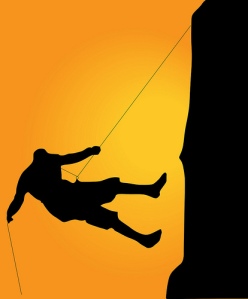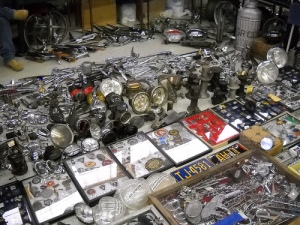
K-12 is based on a fill up the bucket model. You start with 13 years and then fill it up with topics or subjects. If you have an empty space you can fill it up with a home room or study hall. The same holds true for a 4 year degree in college or even a two-day training program in business. The calendar is the boundary and filling it up is the goal.
What would happen if you flipped things around and said, “we have a goal and we are going to try and reach it as fast as we can?” For example, we are going to teach you how to read at 500 words per minute with 90% comprehension as quickly as possible…And when you’re there, you’re done. We aren’t going to fill up your time with busy work or confuse you by loading another dozen subjects at the same time.
If by this approach, you are able to complete k-12 in 12 years or less, the entire system can literally save billions of dollars.
In business training, you find that after a certain number of days that you reach a saturation point where there’s no more room in anyone’s head. Staying focuses and accomplishing the goal will end up taking less them without wasting time.
So my slogan for improving public education, is..stop filling the bucket and focus on the goal.
Photo Uploaded on August 13, 2009
by DABlanco69

 There seems to be a built in resistance to looking at taking the variability out of training, learning or education because people are different and have different learning styles. Some people are looking a variability as a good or necessary thing. I think what people are confusing is the difference between variety and variability.
There seems to be a built in resistance to looking at taking the variability out of training, learning or education because people are different and have different learning styles. Some people are looking a variability as a good or necessary thing. I think what people are confusing is the difference between variety and variability. Variability is a key enemy of quality. In training, it shows up in a lot of places especially in these situations:
Variability is a key enemy of quality. In training, it shows up in a lot of places especially in these situations: Thinking about a green belt or brown belt project around training or employee development? Here’s the key. You have to think about learning as a process and not an event or series of events. If you map out from end to end how you actually learn something to a high level of proficiency, you will have the steps in a process. Consider how you learn to make an effective presentation. You might take a course or series of courses, but you also have a lot of practice, feedback and coaching required. It takes more than one role play to master presentation skills.
Thinking about a green belt or brown belt project around training or employee development? Here’s the key. You have to think about learning as a process and not an event or series of events. If you map out from end to end how you actually learn something to a high level of proficiency, you will have the steps in a process. Consider how you learn to make an effective presentation. You might take a course or series of courses, but you also have a lot of practice, feedback and coaching required. It takes more than one role play to master presentation skills. Do teams always outperform individuals? If not, when to individuals excel over teams? As a general rule, I’d say teams work best when there is more to do than one person can handle, there is enough time to work on team formation and team work, collaboration will produce a better outcome and there is a need for a wide range of skills and talents. On the other hand individuals work best when time is critical, you require unique talent or require superior individual performance.
Do teams always outperform individuals? If not, when to individuals excel over teams? As a general rule, I’d say teams work best when there is more to do than one person can handle, there is enough time to work on team formation and team work, collaboration will produce a better outcome and there is a need for a wide range of skills and talents. On the other hand individuals work best when time is critical, you require unique talent or require superior individual performance. Many people will tell you that top performers don’t make the best managers or leaders. So what I wanted to post here are some of the things that only top performers bring to the position of manager or leader. For our example, we will use the positions of sales manager and top salesperson.
Many people will tell you that top performers don’t make the best managers or leaders. So what I wanted to post here are some of the things that only top performers bring to the position of manager or leader. For our example, we will use the positions of sales manager and top salesperson. Competency models look at a task, job or something like teamwork or leadership and ask the question what are the skills, knowledge and attitudes required. Some models replace attitudes with attributes. For our discussion either one fits. What you end up with is groups of statements that break everything down into small pieces. A sales competency might be around something like asking good questions or questioning skills.
Competency models look at a task, job or something like teamwork or leadership and ask the question what are the skills, knowledge and attitudes required. Some models replace attitudes with attributes. For our discussion either one fits. What you end up with is groups of statements that break everything down into small pieces. A sales competency might be around something like asking good questions or questioning skills.






